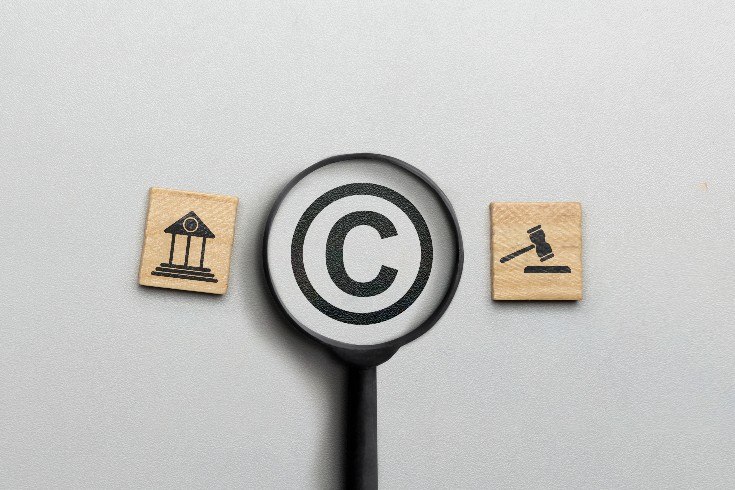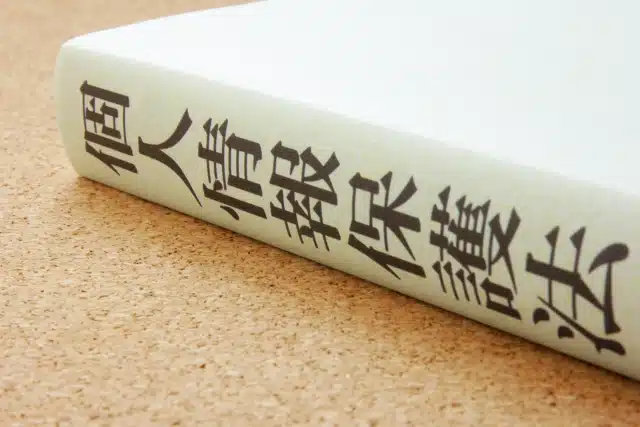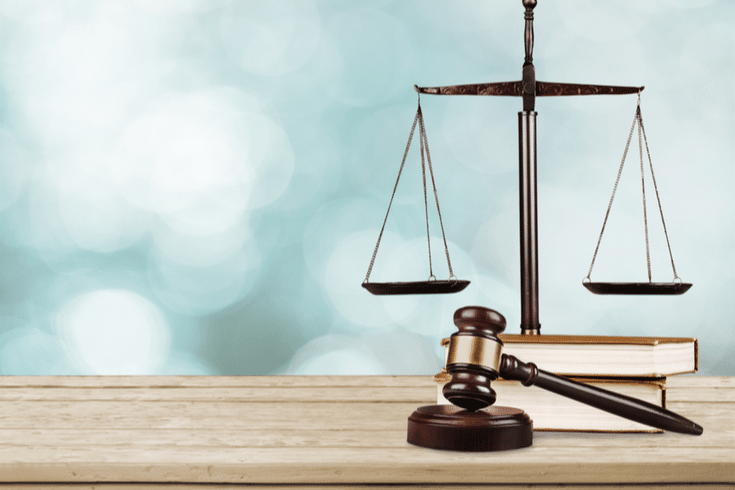Definition of 'Works' under Japanese Copyright Law: An Explanation Through Case Law

In the realm of corporate intellectual property strategy, accurately identifying whether the assets created by a company are legally protected is an essential first step. Under Japanese copyright law, the concept of a “work” serves as the starting point for such protection. If something is not recognized as a “work,” it will not be eligible for copyright protection. Therefore, understanding whether various outcomes of business activities, such as product designs, marketing materials, software, and website content, qualify as “works” is crucial for both risk management and asset utilization. Article 2, Paragraph 1, Item 1 of the Japanese Copyright Law defines a “work” as “something that creatively expresses thoughts or feelings and belongs to the fields of literature, academia, art, or music.” This seemingly abstract definition becomes clearer through the judgments of courts in specific cases. The Japanese legal system is personalityized by the application and interpretation of general definitions set forth in codes by the courts in individual cases. To truly grasp the definition of a work, it is essential to analyze past court decisions. This article will dissect the definition of a “work” into its four components—namely, the expression of “thoughts or feelings,” the presence of “creativity,” the fact that it is “expressed,” and its belonging to the realms of “literature, academia, art, or music”—and will provide a detailed explanation of how each requirement has been interpreted in actual business scenarios, based on a wealth of case law.
The Legal Definition of “Works” Under Japanese Copyright Law
Japanese Copyright Law defines the core subject of its protection, “works,” in Article 2, Paragraph 1, Item 1 as follows:
“Works” are creative expressions of thoughts or emotions that fall within the domains of literature, academia, art, or music.
This definition encompasses four fundamental requirements that must be met for a creation to be recognized as a work protected under copyright law. To receive protection, a creation must satisfy all of these requirements, which are as follows:
- Contain “thoughts or emotions”
- Be “creative”
- Be an “expression” of something
- Belong to the domains of “literature, academia, art, or music”
In the following sections, we will delve into each of these requirements, exploring how courts have interpreted them through specific case examples.
“Thought or Emotion” — The Fruits of Human Mental Activity
The first requirement for a work to be considered a copyrightable creation is that it embodies human “thought or emotion.” This requirement ensures that the work originates from human mental activity, excluding mere facts, data, or purely functional laws from copyright protection. It plays a role in excluding from copyright protection those elements that are not the product of human creativity.
This requirement functions as a sort of ‘gatekeeper,’ directing different intellectual properties to the appropriate legal systems. Creative expressions of thought and emotion fall under copyright law, technical inventions under patent law, designs of industrial products under design law, and mere data such as customer lists may be protected as trade secrets under contract or unfair competition law. Understanding this distinction is crucial for strategizing on how to protect a company’s intellectual property under the relevant laws.
In case law, this boundary has been strictly interpreted. For example, Article 10, Paragraph 2 of the Japanese Copyright Law states that “miscellaneous news and current event reports that merely convey facts” do not constitute copyrightable works. Based on this, mere data or lists of facts are not recognized as copyrightable works unless they are infused with the creator’s thought or emotion.
Similarly, documents whose expression is entirely determined by practical purposes, leaving no room for the creator’s personality, tend not to meet this requirement. For instance, the Tokyo District Court’s decision on May 14, 1987, denied the copyrightability of a standard land sale contract. Likewise, the Tokyo District Court’s decision on August 31, 1965, made a similar ruling regarding bills of lading. The wording of these documents is standardized due to practical demands for transaction safety and efficiency and is not considered to express the creator’s thought or emotion.
On the other hand, academic content may be considered a copyrightable work if it is recognized as expressing the author’s thought or emotion. The Tokyo District Court’s decision on June 21, 1978, affirmed the copyrightability of a paper on the right to sunlight, recognizing it as a creative expression of the author’s thoughts on sunlight issues. Thus, even scientific or technical subjects can be protected as copyrightable works if the structure, analysis, and explanation reflect the author’s intellectual activity, that is, “thought.”
“Creativity” — The Expression of the Creator’s Individuality
The second requirement, “creativity,” does not necessarily demand high artistic quality, novelty, or originality under Japanese copyright law. What is sought here is whether some form of the creator’s “individuality” is expressed. In other words, if the creator has a range of choices in their expression and the result of those choices reflects the creator’s unique personalityistics, then the requirement for creativity is considered to be met.
The presence or absence of “creativity” is judged from the perspective of how much freedom of expression the creator had. If the method of expression is significantly constrained by functionality, medium, or subject matter, it becomes difficult to exhibit individuality, and the work is less likely to be recognized as a copyrightable creation. Conversely, when there are many options for selection, arrangement, and wording, creativity is more likely to be acknowledged.
An example of affirmed creativity is the case of maps as copyrightable works. The Tokyo District Court’s decision on May 27, 2022 (Reiwa 4), recognized the copyright of a residential map. The court determined that the creator’s individuality was evident in the selection of information to include, such as building names, resident names, and illustrations indicating the locations of facilities, as well as in the method of arranging and displaying this information in a searchable and visually accessible manner.
Databases are judged with a similar rationale. In the “Town Page Database Case” decision by the Tokyo District Court on March 17, 2000 (Heisei 12), creativity was recognized not in the individual telephone number information but in the “occupational classification system” itself, which was uniquely structured for search convenience, thus protecting the database as a copyrightable work. In contrast, a telephone directory (Hello Page) simply arranged in alphabetical order was not recognized for such systematic creativity.
The field of computer programs has seen similar judgments. The Osaka District Court’s decision on January 29, 2024 (Reiwa 6), affirmed the copyright of multiple programs, stating that despite being written in standard programming languages, the specific design of data processing and the structure of the source code, which spanned hundreds of pages, allowed the creator a considerable “range of choices,” and as a result, the creator’s individuality was expressed.
On the other hand, when the expression is commonplace, creativity is denied. In the “Stick Spring Roll Case” decision by the Tokyo District Court on March 30, 2022 (Reiwa 4), the court denied the creativity of a photograph, stating that the lighting, angles, and presentation techniques used to make the spring rolls look appetizing were all common expressions typically employed in commercial photography.
Short catchphrases also tend to be denied creativity due to the limited choices of expression. The Intellectual Property High Court’s decision on November 10, 2015 (Heisei 27), ruled that the catchphrase for an English language learning material, “Just listen to English like listening to music,” lacked creativity due to its brief and descriptive nature, with extremely limited expressive options. In contrast, the traffic safety slogan “I feel safe, more than on mom’s lap, in a child seat” was recognized for its creativity due to its unique perspective and method of expression.
“Expression” — The Principle of the Idea-Expression Dichotomy Under Japanese Copyright Law
The third requirement for a work to be protected by copyright is that it must be a concrete “expression.” This is based on the fundamental principle of copyright law known as the “idea-expression dichotomy.” In other words, the law protects not the ideas themselves, but only the expressions of those ideas. This principle is essential for allowing the foundational elements such as ideas, facts, and theories to be freely utilized as shared assets of society, thereby promoting the development of culture. The purpose of Japan’s Copyright Law, as stated in Article 1, to “contribute to the development of culture,” is supported by this principle.
The Supreme Court of Japan’s decision on June 28, 2001 (Heisei 13), in the “Esashi Oiwake Incident,” most clearly demonstrates this principle. In this case, a non-fiction writer had composed a work with a narrative structure that described how the town of Esashi in Hokkaido once prospered through herring fishing, later declined, and now regains its vibrancy annually through the national folk song competition “Esashi Oiwake.” Subsequently, a television station produced a documentary program with the exact same historical context and narrative structure. The Supreme Court overturned the lower court’s decision and denied copyright infringement. The logic was a strict separation between unprotected ideas and facts, and protected expressions. It was determined that the historical facts of the town and the narrative framework (plot) of “prosperity → decline → revival” were unprotected “ideas” that anyone could use. On the other hand, the specific language and metaphors used by the writer to tell the story were protected “expressions.” Since the television station utilized ideas and facts but employed its own unique expressions through narration and visuals, it was concluded that it did not directly convey the “essential personalityistics of the expression” of the original work, and therefore did not constitute copyright infringement.
This idea-expression dichotomy is widely applicable in other fields as well. For example, in the “Fishing Game Incident” decision by the Intellectual Property High Court on August 8, 2012 (Heisei 24), it was ruled that the rules and system of the game, as well as the sequence of screen transitions from “title screen → fishing spot selection → casting → catch screen,” were merely “ideas” related to the mechanics of a fishing game and not subject to copyright protection. What is protected are the specific “expressions” such as the actual graphic design of the screens, personalitys, music, and text. Therefore, even if a competitor imitates the functionality of a company’s software, it is difficult to claim copyright infringement unless the source code is directly copied. This is because the “idea” of functionality is not protected, while the “expression” in the form of source code is protected.
“The Scope of Literature, Scholarship, Art, or Music”—The Realm of Intellectual Cultural Property
The final requirement is that the work falls within “the scope of literature, scholarship, art, or music.” This requirement is broadly interpreted to encompass the products of intellectual and cultural mental activities and usually does not pose many issues. However, in the field of “applied art,” where artistic creations are applied to practical items, this requirement becomes a significant point of contention.
With applied art, the challenge lies in distinguishing between copyright law, which provides long-term protection, and design law, which assumes shorter-term protection. Courts tend to be cautious, as protecting the design of practical mass-produced items under copyright law could render the role of design law obsolete and unduly restrict industrial activities.
An important criterion for this issue was established by the Intellectual Property High Court’s decision on December 8, 2021 (Reiwa 3), in the “Octopus Slide Case.” The court ruled that for applied art (excluding one-off artistic crafts) to be protected as an “artistic work” under copyright law, its aesthetic features must be “separable” from its practical function. Regarding the octopus slide in question, the court determined that its shape was inseparably linked to its function as play equipment. The octopus’s head supported the structure, and its legs constituted the slide itself, integrating aesthetic and functional elements in a way that could not be separated. As a result, the slide was concluded not to qualify as an artistic work under copyright law.
This judgment provides important implications for companies seeking to protect their product designs. When aiming to protect the design of a functional product as intellectual property, the first consideration should be registration under design law, understanding that protection under copyright law is limited.
On the other hand, when aesthetic expression can be clearly separated from function, copyright protection is possible. For example, illustrations printed on T-shirts or patterns used on futon fabrics are considered independent artistic works, separate from the functional aspects of the T-shirts or futons, and thus can be the subject of aesthetic appreciation, qualifying for copyright protection.
The Boundary Between Copyright-Protected Works and Non-Protected Elements Under Japanese Law
To organize the discussions thus far, let’s compare the boundary between ‘expressions’ that are protected by copyright and ‘ideas’ or ‘facts’ that are not, based on specific legal cases in Japan.
| Protected | Not Protected | Related Legal Cases |
|---|---|---|
| Specific textual expressions and metaphors in a novel | Plot, themes, historical facts of the novel | Esashi Oiwake Case |
| Selection, arrangement, and presentation of information in residential maps | Geographical facts themselves | Residential Map Case |
| Game screen design, personality illustrations, music | Game rules, mechanics, sequence of screen transitions | Fishing Game Case |
| Specific source code descriptions in computer programs | Algorithms and functions executed by the program | Osaka District Court, January 29, 2024 (2024) Decision |
| Original expressions used in traffic safety slogans | Common, descriptive advertising catchphrases | Traffic Slogan Case / Speed Learning Case |
| Illustrations printed on T-shirts | Design of play equipment integrated with its function | Octopus Slide Case |
Summary
The definition of “work” under Japanese Copyright Law is not merely a formal checklist, but a deeply considered standard applied by the courts on a case-by-case basis. The four requirements—thought or sentiment, creativity, expression, and the scope of literature, academia, art, and music—are interrelated to balance the protection of creators’ rights with the public interest of securing ideas and facts as shared assets of society. To properly manage one’s intellectual property and avoid the risk of infringing on others’ rights, a deep understanding of these requirements and the trends in case law that embody them is essential.
Monolith Law Office has a proven track record of providing extensive advice and support on complex issues related to Japanese Copyright Law to clients across various fields, including software, content creation, and product design. Our firm is staffed with multiple English-speaking professionals, including those with foreign legal qualifications, enabling us to offer smooth and specialized legal services to companies engaged in international business facing copyright challenges. For consultations on the definition of works as explained in this article, or for the formulation of specific intellectual property strategies, please do not hesitate to contact our firm.
Category: General Corporate





















